Today was our first really serious, important day in Germany. Taking a forty minute train ride outside of the city, we ended up in Dachau, the first concentration camp ever constructed (in 1933), and the first concentration camp we visited on this trip. It was an absolutely incredible experience to stand in the camp and see the remnants of the terrors that had occurred there seventy years ago.
Dachau was the most publicized camp during Hitler’s regime. Beginning as a camp for political prisoners, Hitler invited journalists, photographers, and other people to take pictures of the camp and its prisoners and spread the word that his camps were more areas to change people for the better – to fix the morals of the social pariah and wrongdoers of Germany.
In reality, the soldiers were making people smile with the promise of torturing them more, making them work harder, and promising even more miserable lives if they did not cooperate with the publicity of the camp. Evidence of this was seen everywhere. By the time Americans liberated the Jews from the concentration camps, 32,000 Jews were living in cramped conditions that were made for 6,000 people. Trying to imaging that many people being squeezed into tiny barracks, sharing minuscule amounts of rations, bunks, toilets, and clothes was difficult, until we watched a video from the liberation showing just how all these people crammed together.
What I found to be one of the most affecting areas was the bunker – the camp’s prison. the idea that there was a prison inside of a concentration camp was discerning. The bunker was built three times throughout the 12 year life of Dachau, and it was horrifying to stand in the cells and see pictures and notes describing what occurred in the cell I was standing in.
The people in charge of the bunker was actually not associated to the Nazi army, but were actually people who volunteered to show their support for the regime. They were promoted the more they showed high levels of violence and cruelty. One of their favorite methods of torture was pole hanging – they would hang the prisoner high on a post and leave them there for hours until they would confess or say whatever the officers wanted of them.
There were many more graphic representations of life in the bunker. The sad thing, as our tour guide noted, was although Dachau was used as propaganda to prevent the world from knowing what was really going on in these camps, 45,000 prisoners still died – from hunger, dehydration, overexertion, typhus, hangings, etc. This is a paltry number compared to the rest of the 6 million Jews killed during the Holocaust.
The other area I found extremely difficult to see was the crematorium. The crematorium is located in this picturesque, beautiful tree covered area of the camp, across a river and to the side of some religious temples and churches. There are two crematoriums – the old one, which held two ovens, and the newer one, which held a never used gas chamber, and sanitation area, several ovens, and two large rooms to hold the bodies waiting to be burned.
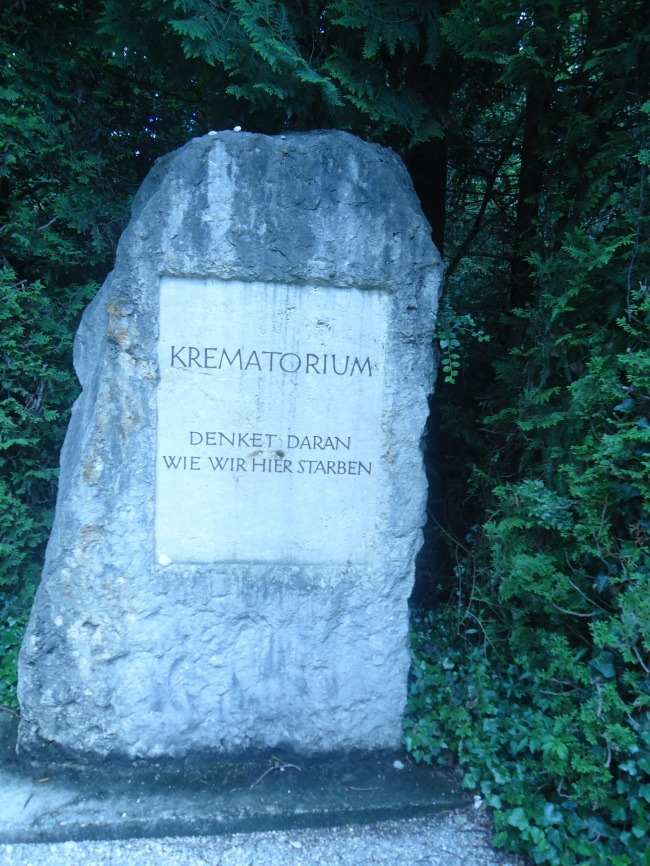
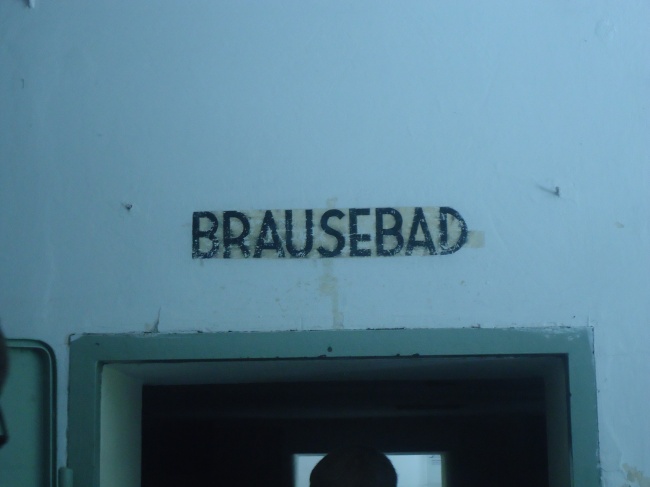
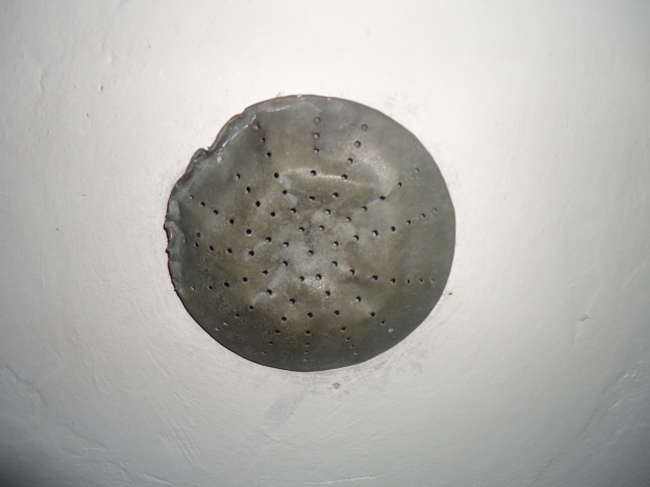
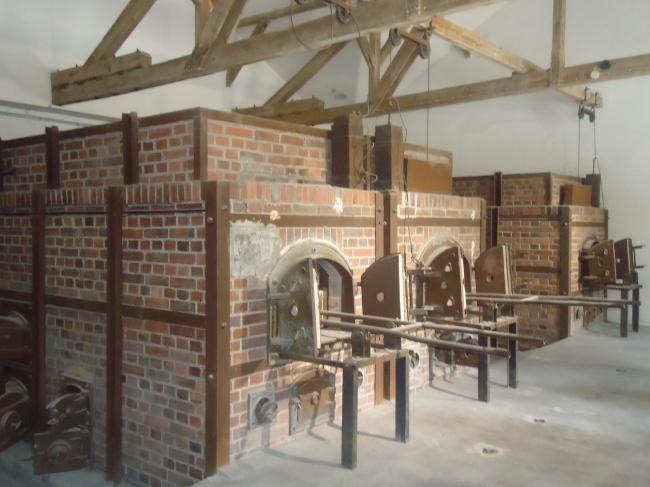
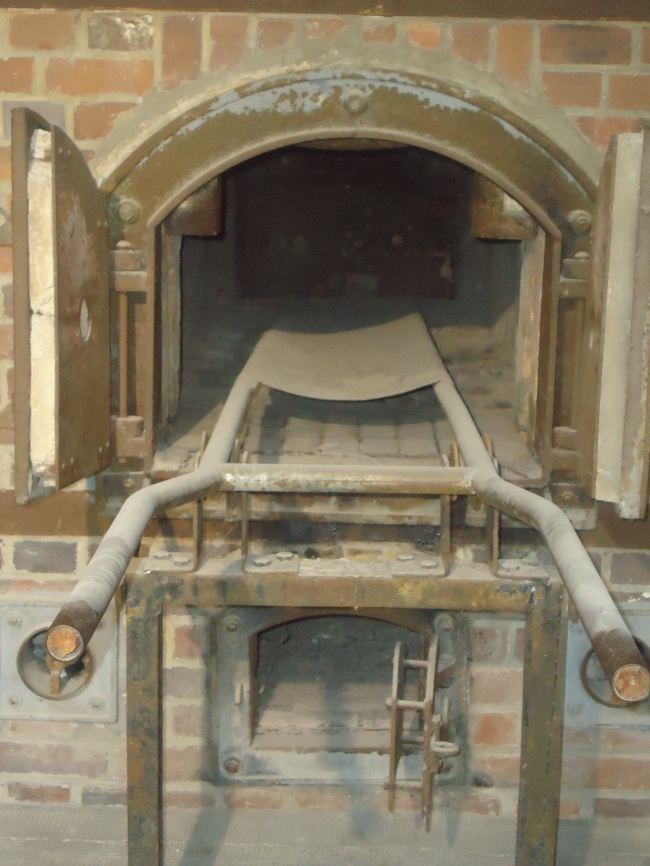 When the Americans liberated the Jews from Dachau, they found 3000 bodies waiting to be burned – the Nazis couldn’t burn them fast enough because they didn’t have enough coal. There was a sign next to the ovens noting that as a form of psychological torture, the Jews would be hung to die in front of the ovens.
When the Americans liberated the Jews from Dachau, they found 3000 bodies waiting to be burned – the Nazis couldn’t burn them fast enough because they didn’t have enough coal. There was a sign next to the ovens noting that as a form of psychological torture, the Jews would be hung to die in front of the ovens.
Standing in the showers, looking at the ovens, and knowing that the prisoners were forced to build their own death chambers, I can’t help but be completely disgusted and repulsed about this sheer offense to humanity. I’m still trying to comprehend it. Everything in and around the crematorium smells completely sterile – you have to wonder how much bleach was used everywhere to get any human remnants and smells out. It’s astounding to imagine so much degradation, humiliation, and complete disregard of human lives piled around such a beautiful area. There was a quaint little secluded path behind the crematorium. Following it, I found out it was actually a path to a former gun range, where officers and soldiers would line up prisoners for gun practice. In front of the the wall where the prisoners would stand was a “blood trench,” so as to not damage the nature around them.

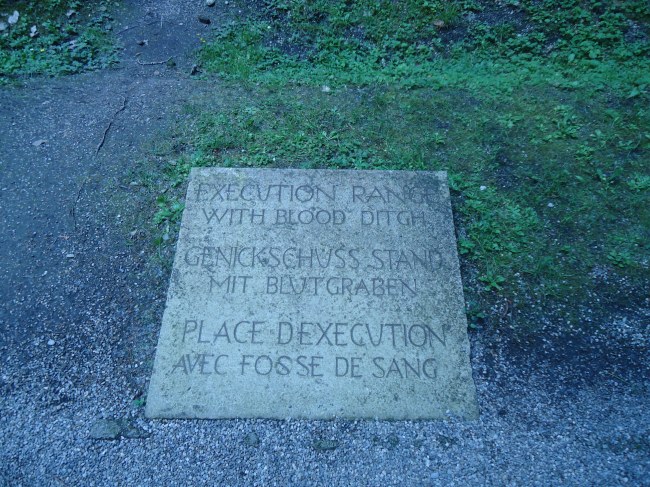
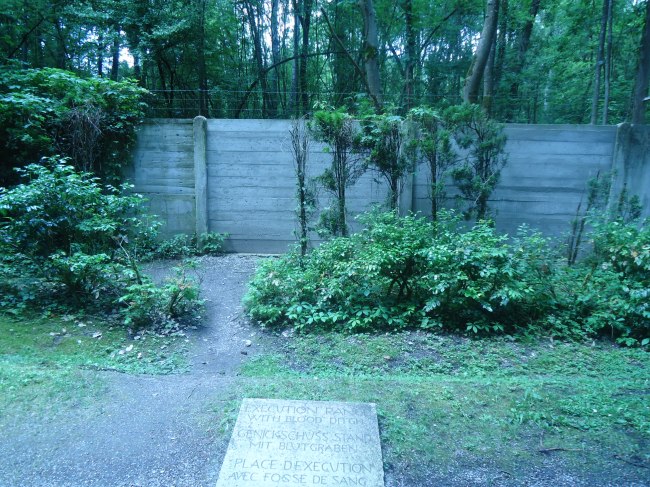 The idea of trenches was a common idea seen through the camp – there was another large one located between a row of barracks and an electric fence. The soldiers had made the prisoners dig it there in order to prevent them from escaping. In front of the ditch was a field of grass; behind, a field of barbed wire, and electric fence, and a river. The prisoners were warned that if they stepped on the grass, the soldiers would immediately open fire on them to prevent them to escape. They would fall into the ditch and were essentially slaughtered as there was no way out. Our guide told us of a time when 500 prisoners tried to escape at once – one prisoner made it across the ditch and touched the electric fence, sacrificing himself to shortcut the fence so the other prisoners could escape. After a few days of hunting and slaughter, of the 500 prisoners, only 14 survived.
The idea of trenches was a common idea seen through the camp – there was another large one located between a row of barracks and an electric fence. The soldiers had made the prisoners dig it there in order to prevent them from escaping. In front of the ditch was a field of grass; behind, a field of barbed wire, and electric fence, and a river. The prisoners were warned that if they stepped on the grass, the soldiers would immediately open fire on them to prevent them to escape. They would fall into the ditch and were essentially slaughtered as there was no way out. Our guide told us of a time when 500 prisoners tried to escape at once – one prisoner made it across the ditch and touched the electric fence, sacrificing himself to shortcut the fence so the other prisoners could escape. After a few days of hunting and slaughter, of the 500 prisoners, only 14 survived.
The survivors of the camps insisted to the German nation that the camp be kept preserved and not destroyed, in order to remember the atrocities that occurred here. Many memorials were placed throughout the camp, including a building memorializing all the persecuted, and a sculpture of twisted figurines honoring all who died because of the electric fence.
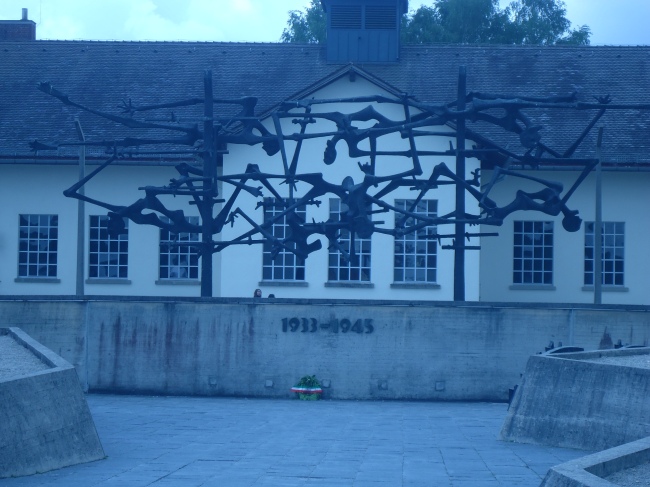

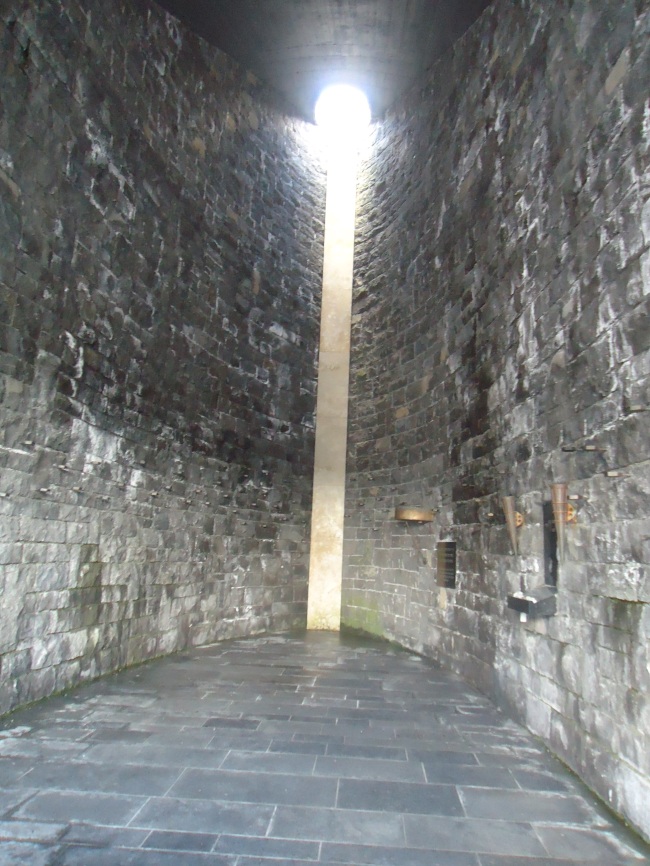 Sad to say, the thing I found most vile today had nothing to do with the camp itself – it was the utter disrespect the tour groups of German school students had for the area. Dachau is a required field trip for all German students so they can understand their history and to prevent it from happening again. Yet many children were playing in the gas chamber, taking pictures posing as if they were getting gassed, pretending to throw themselves on the barbed wire, pretending to shoot someone running towards the ditch and making bomb noises, desecrating the tree path to the gun range by throwing litter and pulling greenery and blocking pathways and tour guides from continuing giving their lecture. Yes, they are still children and fro them this is their equivalent of tenth graders going to the zoo for a biology project, but Dachau, considered the most mild of concentration camps, is something that must be treated with the utmost respect. Their lack of respect did not impress me and angered me, considering they consider Americans the most rude and crude of nations.
Sad to say, the thing I found most vile today had nothing to do with the camp itself – it was the utter disrespect the tour groups of German school students had for the area. Dachau is a required field trip for all German students so they can understand their history and to prevent it from happening again. Yet many children were playing in the gas chamber, taking pictures posing as if they were getting gassed, pretending to throw themselves on the barbed wire, pretending to shoot someone running towards the ditch and making bomb noises, desecrating the tree path to the gun range by throwing litter and pulling greenery and blocking pathways and tour guides from continuing giving their lecture. Yes, they are still children and fro them this is their equivalent of tenth graders going to the zoo for a biology project, but Dachau, considered the most mild of concentration camps, is something that must be treated with the utmost respect. Their lack of respect did not impress me and angered me, considering they consider Americans the most rude and crude of nations.
I’m still attempting to absorb everything I have seen, heard, and learned today. I talked with a lot of the other students about what to expect at the end of the trip – if Dachau was the mild, easiest to absorb place of terror in Hitler’s regime, what can we expect from Auschwitz? I will never forget today and the emotions that sped through me the entire time. As a memorial wall notes in the main square of the camp (where they took roll call every day), this is something that can happen never again.
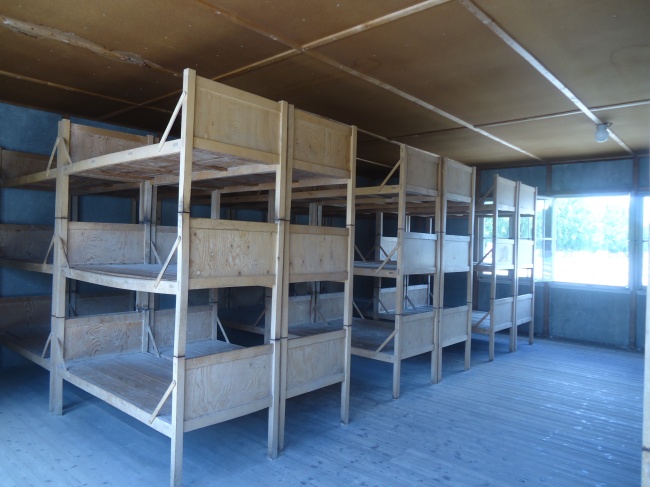

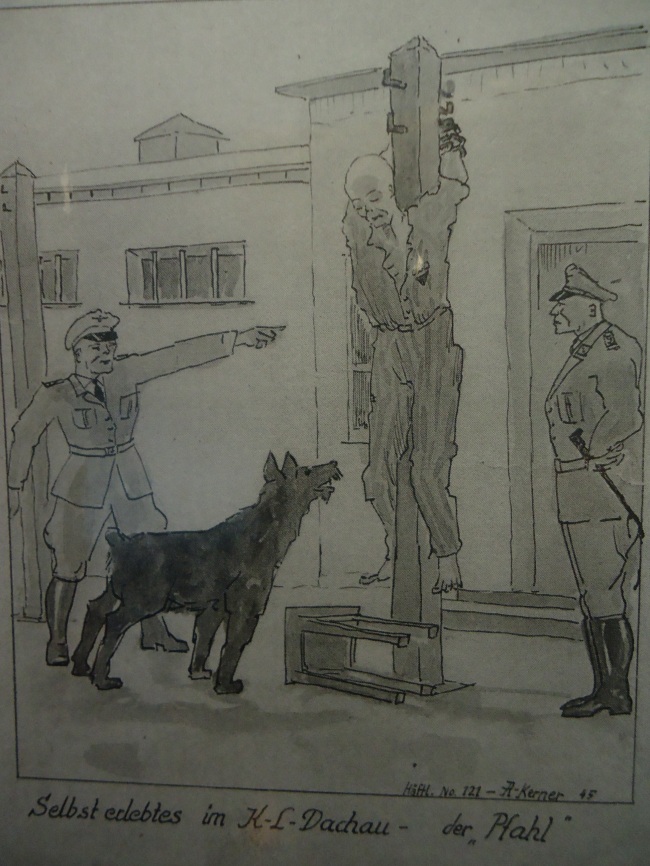
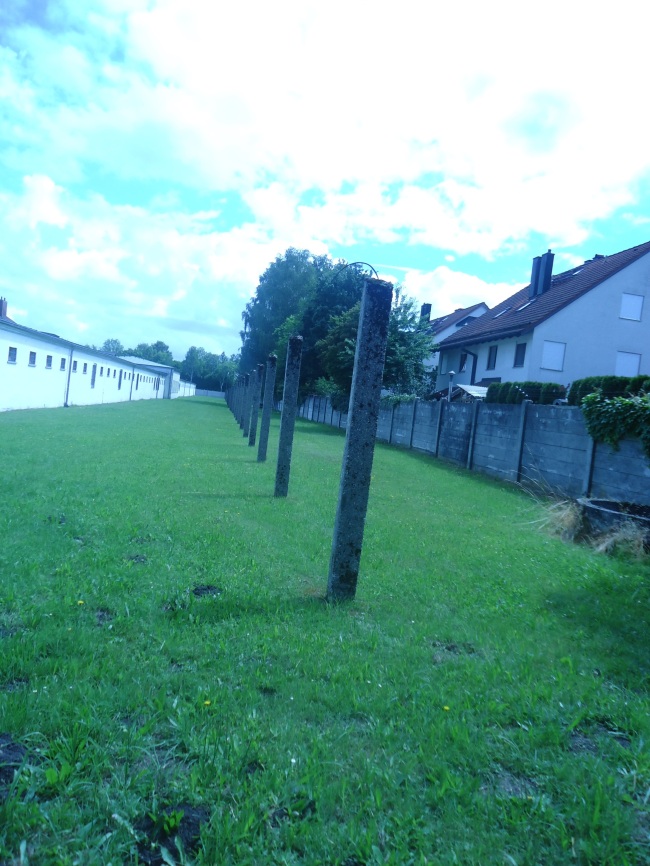
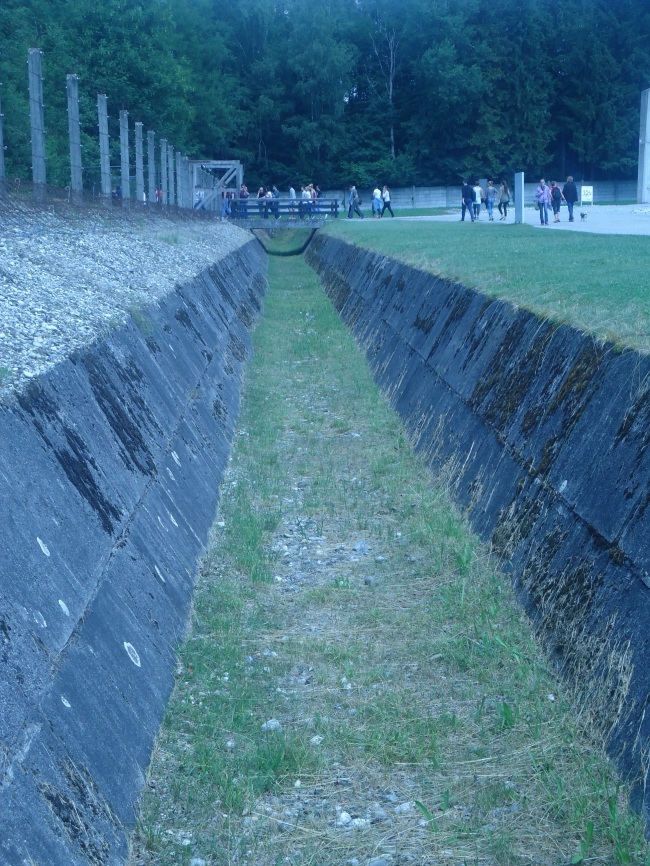

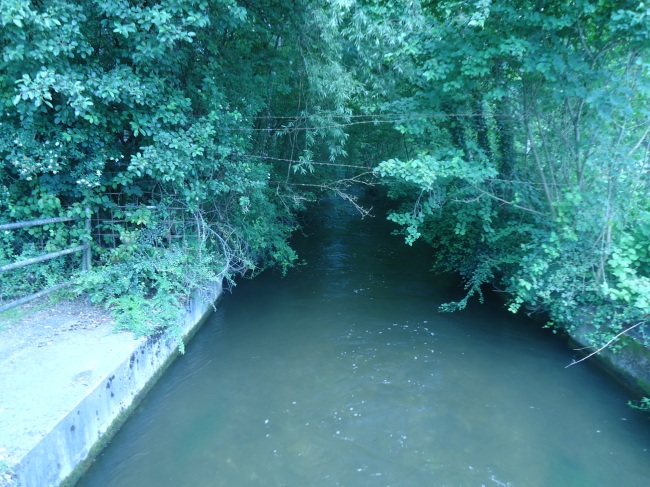
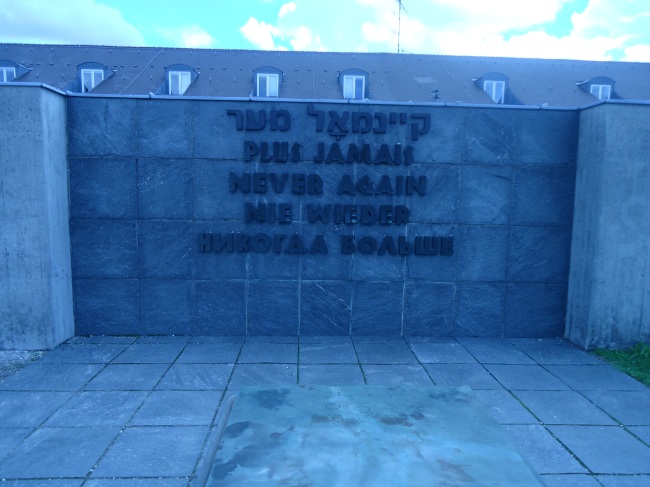
I love you mamacita
Though somewhat familiar with the particulars in this horrific part of history, reading your post along with the pictures you have attached makes me feel like I am standing there with you and echo your sentiments. This is a very difficult topic to cover from thousands of miles away in a classroom from behind a chapter book as we do here in America, I can only imagine being able to physically stand there and visually putting the pieces together yourself as you described, must be quite an experience. Thank you for sharing, I look forward to your next post. Love You…
>>> bienerschnitzel 7/4/2013 3:12 PM >>>
kimmeeebee posted: “Today was our first really serious, important day in Germany. Taking a forty minute train ride outside of the city, we ended up in Dachau, the first concentration camp ever constructed (in 1933), and the first concentration camp we visited on this trip. “